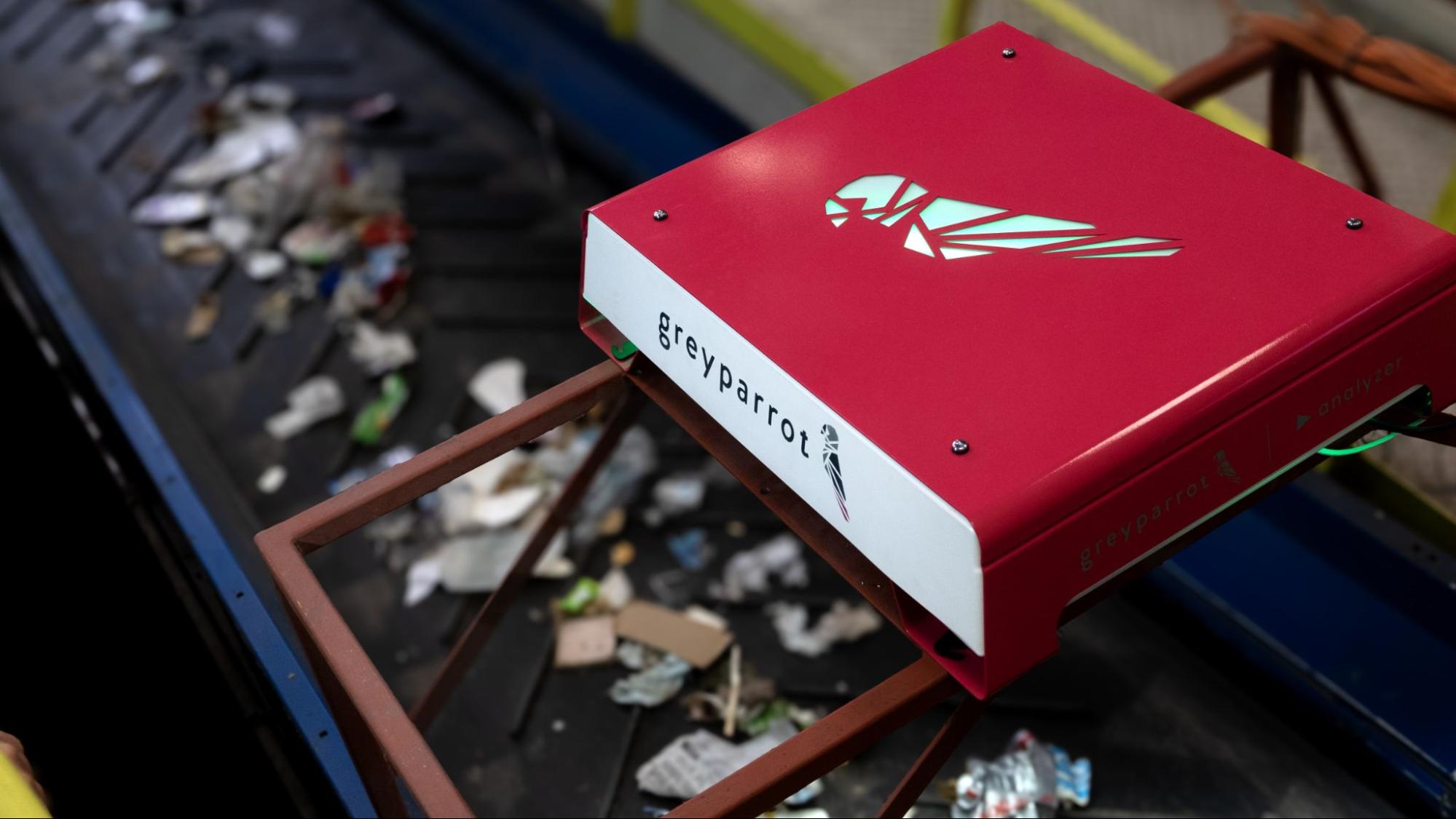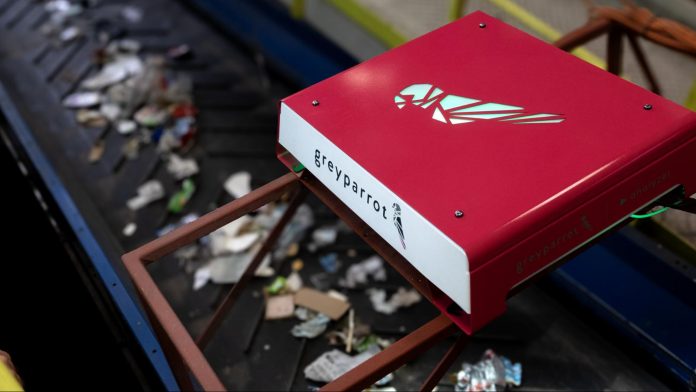Each year, the world recycles only around 13% of its two billion-plus tons of municipal waste. By 2050, the world’s annual municipal waste will reach 3.88B tons.
But the global recycling industry is far from efficient. Annually, as much as $120B of potentially recoverable plastic—let alone paper or metals—ends up in landfills rather than within new products made with recycled materials.
A UK-based startup, Greyparrot, has developed a small, AI-powered device offering “waste intelligence,” and aims to help recycling plants become more efficient and environmentally friendly.
The sleek, two-foot-square device—dubbed the Greyparrot Analyzer—uses embedded cameras to identify and differentiate among materials on conveyor belts running through recycling plants.
The analyzer—using a machine learning, object detection model (ODM)—is attached to, and helps retrofit recycling plants’ infrastructure. Trained on tens of millions of waste images, the ODM takes less than 60 milliseconds to capture and analyze images of quickly-moving waste.
The analyzer’s ODM, which was trained on-premise and in the cloud using NVIDIA H100 Tensor Core GPUs, NVIDIA L4 Tensor Core GPUs, as well as PyTorch and NVIDIA CUDA-X libraries, can identify roughly 90 different types of materials. Each analyzer, which weighs around 40 pounds, is also powered by an NVIDIA GeForce RTX 4060 GPU.
In 2024, Greyparrot analyzed more than 40 billion waste objects across its worldwide facilities. Armed with this “waste intelligence,” operations managers use the data for two primary purposes.
First, plant operators get real-time and longitudinal analytical insights into how effectively their facility separates and creates homogenous piles of recyclable materials—like paper, metals, and plastics. Creating purer collections of recyclable materials, which are then sold to product manufacturers, is a key component of the world’s $1.3T recycling industry.
A second use case for the data—or really, the ODM—is to supplement the operating systems of robotic arms that are deployed within facilities to sort different types of waste. The arms communicate with the ODM to help them more accurately sort materials.
“A recycling plant’s job is to turn what we discard, and never think of again, back into virgin material that can be recycled to make more of those same things,” said James Paterson, Greyparrot’s vice president of engineering. “We’re constantly tackling throughput and quality, so recycling facilities can process more waste, and still end up with more purified products.”

Recycling plants deploying the analyzer also use it as something of a trip wire.
It’s not uncommon, for instance, for one component of a sorting facility to jam. When that happens, different materials can get mixed together, or end up inadvertently getting thrown out rather than being readied for recycling.
With the analyzer’s ODM, sorting errors—triggered by unanticipated jams—are quickly identified and relayed to operators, who can quickly intervene. Without the ODM, it might take hours for facilities to identify a mechanical mishap.
“You can imagine in a big facility with a lot of machines, it may take three to four hours for someone to notice a machine is jammed,” said Paterson. “And then someone looks and sees there are all these valuable aluminum cans [incorrectly] getting thrown out, and they say, ‘Oh my god. The system is down. We better check the machines.’ And that’s money that’s literally going down the drain and into landfills.”
The five-year-old London-based startup—which is part of the NVIDIA Inception Program— operates in more than 55 recycling facilities across 20 different countries. With about 50 full-time employees, primarily in the UK and US, but also in Spain, Italy, and The Netherlands, Greyparrot is expanding its global presence.
In early 2024, the Dutch recycling firm Bollegraaf Group, the world’s largest recycling plant builder, agreed to integrate Greyparrot’s technology into its new facilities.
As more state-of-the-art facilities integrate AI into their waste analytics and robotic capabilities, Greyparrot anticipates the analyzer will help improve operational performance and improve recycling yields at scale.
Read more about Greyparrot’s recycling efforts and its relationship with iconic product designer, Tony Fadell.
There’s additional reporting on Greyparrot’s efforts to bring AI to the world’s recycling industry.

